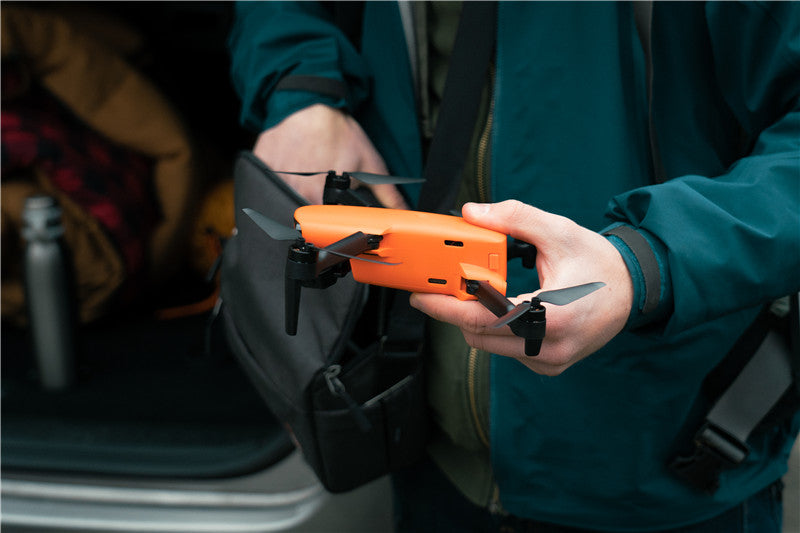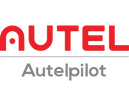Autel Robotics is a new direction for countless drone enthusiasts, and it is currently a strong competitor to DJI. As a new topic on the radar of drone owners, Autel EVO Nano Plus vs DJI MINI 3 Pro. The release of a new generation of EVO series drones has captured the attention of many drone enthusiasts and sent a signal to drone owners that Autel Drone is challenging the market leader with its highly innovative products.
The achievements of Autel drones in the Autel II series are obvious to all, not only consumer drones, but also enterprise drones. Aerial imagery has been done so well that drones are starting to appear on the wish list of many photographers at all levels.
Seeing the world from a height is certainly exhilarating. But these days, drones aren’t just for the wealthy. High-quality drones also come at affordable prices, and the Autel EVO Nano Plus is the first choice for a compact, affordable drone. It is designed to bring joy to drone enthusiasts and photographers.

Table of contents
1. Overview
2. Packaging
3. Design
4. Flying
5. Obstacle Avoidance
6. Dual AF
7. Battery
8. Picture quality
8.1 Image quality
8.2 Video Quality
9. Is DJI better than Autel?
9.1Who should buy this?
10. Technical Specifications
1. Overview

The Autel Evo Nano Plus is a small and lightweight drone that no-experiencers, hobbyists and professionals will love. It's easy to learn and capable of creating 50MP images and 4K videos with beautiful colors and enough detail.
The Autel Nano plus drone connects to a smartphone using the Autel Sky APP to provide a great first-person viewing experience. The APP can download images to your mobile phone immediately after shooting, which is very convenient.
The EVO Nano Plus drone has a plastic body shell and a controlled weight of 249 grams, but is sturdy enough with a maximum wind resistance rating of 5, and it holds up well in light rain and breeze.
Autel's drone has a moderate battery life of 28 minutes. It's totally enough to use your imagination to learn to fly and create images.
One advantage is that the small size allows users to bypass some FAA regulations.
Want one? The EVO Nano Plus drone is priced at just $799 at the Autelpilot store, a price point that's perfectly achievable for many who want to get into the drone world.
2. Packaging
The Autel EVO Nano Plus drone is sold in two packages at the Autelpilot store, one is the Autel EVO Nano Plus Drone Standard Package, one is the Autel EVO Nano Plus Drone Premium Package, and two are drone only The difference between more and less accessories, see the picture. Of course, extra accessories go a long way in our flight, especially the battery.

3. Design
The Autel EVO Nano Plus drone has a foldable wing, a smooth body and four color configurations. The size of the aircraft is 140*90*50mm when folded and 264*310*50mm when unfolded. With its excellent design, the Autel Evo Nano Plus drone won Germany as soon as it was launched. IF Award and Red Dot Design Award.


Autel's EVO Nano Plus is compact enough to fit in your pocket. It is very lightweight and easy to transport. The remote fits comfortably in your hand and connects to your smartphone via the supplied power cord.
4. Flying

Autel's EVO Nano Plus is relatively simple to fly. You can choose between three layouts of the controller to best suit your flying needs. I decided to use the left joystick to move forward, backward and side to side. The right joystick is assigned to turn left and right and move the drone up and down.
Find out what it's like to fly your drone by constantly practicing flying. There are three flight modes for Nano Drones: Standard, Ridiculous and Smooth. I found smooth flight mode best for short videos. Standard enough to navigate the drone quickly and capture stills at critical moments. Ridiculous Mode is for professionals, and since object sensors won't work in this mode, it's only for those with experience in drone piloting.
Learning to fly requires a small learning curve. Once you've found your comfort zone, get ready to unleash your creativity and unleash your curiosity.
5. Obstacle Avoidance

Both the Nano Drones series and Lite Drones series of the EVO series feature three-way obstacle avoidance, namely the front, bottom and rear of the drone. The camera is on top of the gimbal, on the front of the drone. The sensors are located on either side of the camera. The back of the drone has a micro SD card slot, a USB-C port, and two small sensors. The bottom of the Evo Nano Plus has two additional landing sensors.
It is worth mentioning that when landing, make sure that the ground of the landing site is flat, and if necessary, you can prepare a nano drone landing pad, which will ensure that the nano drone will land smoothly and will not cause rollover.
6. Dual AF
Autofocus on the Nano Plus is fast and accurate. When the aircraft is in a hovering position, it is very accurate to track moving objects and shoot. You can also touch an area on the screen to make sure that part of the image is sharp, which we call manual focus.
7. Battery
The Nano drone has a battery capacity of 2250mAh and can fly for about 28 minutes. A full charge takes up to 80 minutes. If you have a connection port, you can use the car charger to charge the drone battery. A full charge of the remote takes up to three hours and lasts about two and a half hours.
The drone has red-yellow-green indicator lights on the back, proving to be pretty foolproof. Green means all is well and it is safe to fly. After the drone is grounded, the yellow light means it is self-checking, and the red light means there is a problem. A yellow light indicates a low battery, while a red light indicates a very low battery. You can also check battery status in the app.
Buying an extra nano drone battery accessory will allow you to fly more, squeeze the side of the battery to remove it and replace it with a new one. Press the button on the battery to see the remaining battery life. When the battery power of the drone is too low, the drone will pop up a warning and automatically return to the original position command, you can also cancel this operation or make the drone stop in place.
8. Picture quality
8.1 Image quality
The image quality provided by the EVO Nano Plus is quite good. The 1/1.28-inch sensor delivers sharp images with plenty of contrast and rich colors, with HDR on to capture more detail in light and dark scenes, and up to 50MP jpeg images are just as vibrant, with astonishing color and detail. The Nano drone supports ISO up to 6400, with an amazing dynamic range.
The RYYB color filter array design with a large aperture of f/1.9 also provides the Nano plus drone with excellent noise reduction and the ability to easily generate high-quality images in low light conditions. When shooting night scenes, the nano plus drone is the top of the bunch of mini drones.
8.2 Video Quality
The 4k video quality of the 1/1.28-inch sensor is very good. It offers enough detail, enough contrast, and beautiful colors.
Video quality when hovering and flying is very smooth. I recommend shooting in smooth mode for the most graceful motion transitions.
If you forget to take a still image, you can also choose an available frame from the video. 4k pixel video cropped out without loss of detail.
At the same time, Nano plus drone supports movie short mode, you will get four movie lens effects, ROCKET, FADE AWAY, ORBIT, FLICK, you can get interesting pictures without skills.
9. Is DJI better than Autel?

Both the DJI mini3 pro and the Autel Evo nano plus are excellent drones. In fact, these are probably the two best consumer drones on the market for under $1,000. They all take spectacular photos and videos. They all have impressive flight modes and specs.
9.1 Who should buy this?
The Autel EVO Nano Plus is definitely a great choice for the personal drone enthusiast. It is also good for professional real estate, landscape, street and portrait photographers. Drones are affordable and produce great results with interesting sensors. While it can withstand moderate rainstorms and gusts of wind, it's not waterproof. When I delve into videography, I strongly consider the EVO Nano Plus.
The Nano Plus' compact size and weight allow customers to bypass many strict FAA regulations and have fun. However, being a professional in flying drones still recommends following the regulations, registering the drone and getting a license.
10. Technical Specifications
| Weight: | Take-off weight (without accessories) 249g |
| Size: |
Folded: 142×94×55mm, Unfolded: 260×325×55mm |
| Maximum flight time (no wind): | 28 minutes |
| Maximum hover time (no wind): | 26min |
| Maximum flight distance (no wind): | 16.8km |
| Sensor: CMOS: | 1/1.28 inch (0.8 inch) |
| Effective Pixels: | 50MP |
| Pixel size: | 2.44μm*2.44μm (Bin2) |
| Lens: | FOV: 85° |
| Equivalent focal length: | 23mm |
| Aperture: | f/1.9 |
| Focusing range: | 0.5m ~ ∞ |
| Focus Mode: | PDAF+CDAF/MF |
| Shooting mode: |
automatic mode (P file): EV adjustable, ISO/shutter automatic, Manual mode (M file): ISO/shutter adjustable, EV not adjustable, |
| ISO range: | Video: ISO100 ~ ISO6400, Photo: ISO100 ~ ISO6400 |
| Shutter Speed: | Photo Mode: 1/8000 ~ 8s, Others: 1/8000 ~ 1/frame rate |
| Zoom range: | digital zoom: 1 to 16 times |
| Photo format: | JPG(8-bit) / DNG(10-bit) / JPG+DNG |
| Photo resolution: | 50MP: 8192×6144 (4:3), 12.5MP: 4096×3072 (4:3), 4K: 3840×2160 (16:9) |
| Photo shooting mode: | single, continuous shooting: 3/5, Auto Exposure Bracketing (AEB): 3/5 shots, Interval: 2s/3s/4s/5s (default)/6s/…/60s (DNG at least 5s), HDR imaging: 3840×2160 |
| Video encoding format: | H265/H264 |
| Video resolution: | 3840×2160 p30/25/24, 2720×1528 p30/25/24, 1920×1080 p60/50/48/30/25/24, HDR: 3840×2160 p30/25/24, 2720× 1528p30/25/24, 1920×1080p60/50/48/30/25/24 |
| Maximum Bit Rate: | 100Mbps |
| Time-lapse photography: |
Original image: 3840*2160, JPG/DNG, Video: 4K P25 |
| Panorama: | horizontal/vertical/wide-angle/spherical, original image:4096*3072, JPG/DNG |
| Supported file system: | Fat32, exFat |
| WIFI transfer: | 20MB/s |
| GNSS | GPS |








